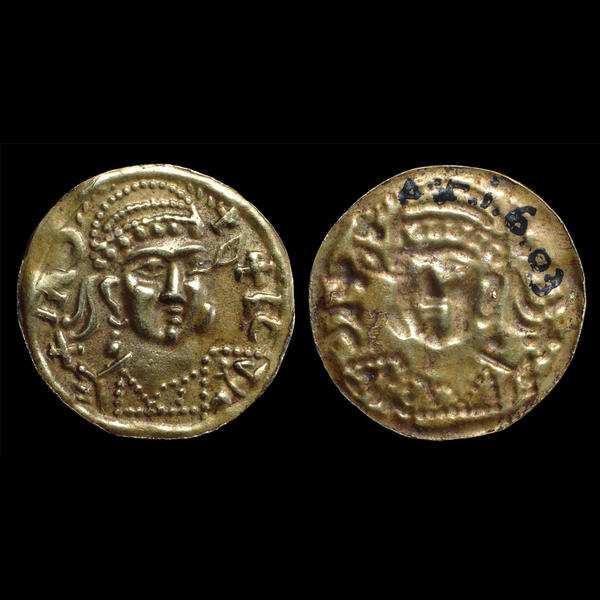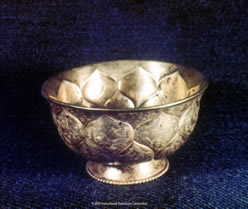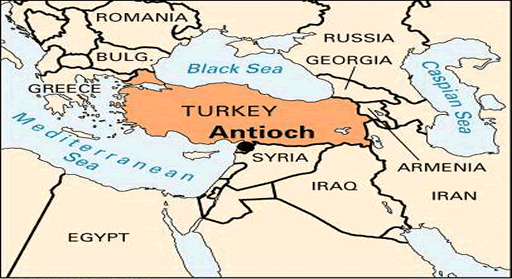


| SILK ROAD STOP: ANTIOCH (CONNECTION TO ROME) |
|
The city was founded c.300 B.C. by Seleucus I, king of Syria, and named for his father Antiochus, a Macedonian general. Situated at the crossing of north-south and east-west trade routes, the city soon became a rich commercial center. Antioch was occupied by Pompey in 64 B.C. and quickly became an important Roman military, commercial, and cultural center. The Romans built great temples, a forum, a theater, baths, aqueducts, and other public buildings. The two main streets, at right angles to each other, were lined with marble colonnades and adorned with temples, palaces, and statues. (Infoplease)
| Antioch Slideshow |
|
Click here for large screen version
|

Roman gold coins

Ancient Roman Gold Shield

Zhang Qian (during Han dynasty) explores Central Asia and opens up the Silk Road

Gold bars (U.S. Mint stores gold for our government)

Gold circuitry computer periphery
Gold
From Rome to China:
"[The jade funeral suit pictured on the right] is made of 2,156 jade pieces sewn together with gold wire. Many Chinese believed jade was capable of preventing the decay of a corpse and that gold possessed the power to defeat death. The use of gold became common in China after traders received gold coins from Rome and the West in payment for silk and spices traded along the Silk Road. Chinese craftworkers began to use gold foil or threads on many of the bronze objects they created. Later they began to cast objects made of solid gold. During the Han dynasty, the Chinese mastered the technique of changing gold into smaller particles, or granules, a process they learned from Western cultures. This enabled them to create fine gold wire to add to the surface beauty of gold and silver objects. Some Chinese also believed that gold could lead to immortality. They created liquid potions composed of gold and pearls and drank them in an effort to prolong their lives." (History Alive)
"After [Zhang Qian (Han dynasty general) explored Central Asia,] the regular traffic began along the Silk Road, on which goods - above all China's silk - were carried across Asia, finally reaching the Roman Empire. Passing through land controlled by the Chinese, the Kushans, the Parthians, and the Romans, the goods were transferred from the caravans of one people to those of another, so that no single individual normally made the entire journey.
As a result, neither the Roman nor the Chinese knew much about the other, and although the Romans loved silk, they asserted that the material grew on tree. By the second half of the 1st century, the Han's general Pan Chao stabilized the Tarim basin region and chased out the Xiongnu who fought to control the trade route in the area. In 97 he decided to directly contact Da Chi'en (Roman Empire) by sending an ambassdor, Kan Ying, to Rome. Therefore Kan Ying set off to the west along the Silk Road with elaborate gifts. He got as far as Mesopotamia. He intended to take ship for Rome but when he was told that the journey would take up to two years, he gave up and returned home. The unfortunate Kan Ying was misinformed about the time by the Parthians, who feared any contact between China and Rome might interfere with their profitable role as middlemen.
The first direct contact between Rome and China didn't happen until the second century after Rome Empire defeated Parthia and controlled the Persian Gulf. In 166 the first Roman envoy was sent by Roman emperor Marcus Aurelius, from the Persian Gulf and successfully arrived China." (Silk-Road.com)
Today:

Jing'an Temple Buddha decorated with gold in Shanghai, China
Gold is used today for decorative purposes, such as the gold Buddha statue (above), in addition to being used as jewelry, backing currency (money), computer and stereo circuitry (it's a good conductor of electricity), and more.
Article: The Real Price of Gold (National Geographic) (PDF)

Chinese jade funeral suit made with Roman gold

Roman gold coin found in Chinese tomb

Golden bowl from the Tang dynasty

Gold jewelry in store display case
